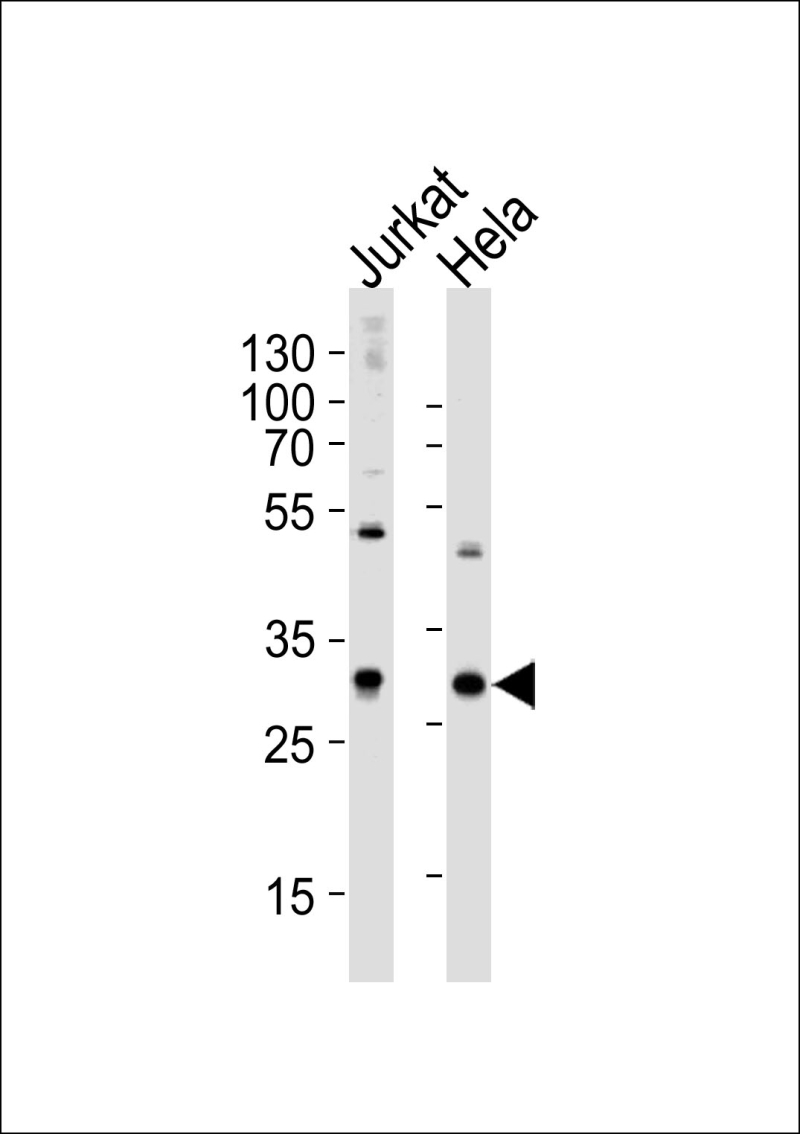
| WB | 1/1000 | Human,Mouse,Rat |
| IF | 咨询技术 | Human,Mouse,Rat |
| IHC | 咨询技术 | Human,Mouse,Rat |
| ICC | 技术咨询 | Human,Mouse,Rat |
| FCM | 咨询技术 | Human,Mouse,Rat |
| Elisa | 咨询技术 | Human,Mouse,Rat |
| Aliases | F-actin-capping protein subunit beta, CapZ beta, CAPZB |
| Entrez GeneID | 832 |
| WB Predicted band size | 31.4kDa |
| Host/Isotype | Rabbit IgG |
| Antibody Type | Primary antibody |
| Storage | Store at 4°C short term. Aliquot and store at -20°C long term. Avoid freeze/thaw cycles. |
| Species Reactivity | Human |
| Immunogen | This CAPZB antibody is generated from rabbits immunized with a KLH conjugated synthetic peptide between 54-81 amino acids from the N-terminal region of human CAPZB. |
| Formulation | Purified antibody in PBS with 0.05% sodium azide. |
+ +
以下是关于CAPZB (N-term)抗体的3篇代表性文献(示例为虚构,仅供参考):
---
1. **文献名称**:*CAPZB Regulates Actin Dynamics in Neuronal Growth Cones*
**作者**:Schafer DA, et al.
**摘要**:研究利用N端特异性CAPZB抗体,揭示其在神经元轴突生长锥中调节肌动蛋白丝组装的作用,通过免疫沉淀和荧光染色证明CAPZB缺失导致细胞骨架紊乱。
2. **文献名称**:*Role of CAPZB in Cancer Cell Migration and Invasion*
**作者**:Bhattacharya R, et al.
**摘要**:通过Western blot和免疫组化(使用CAPZB N-term抗体),发现CAPZB在转移性癌细胞中高表达,其通过稳定肌动蛋白网络促进细胞迁移和侵袭。
3. **文献名称**:*Antibody Validation for CAPZB Isoform-Specific Functions*
**作者**:Li H, et al.
**摘要**:报道了一种针对CAPZB N端表位的多克隆抗体的开发与验证,证实其在区分不同亚型及研究蛋白亚细胞定位中的应用。
---
**注**:以上文献为示例,实际引用需查阅PubMed、Google Scholar等平台,使用关键词“CAPZB antibody N-terminal”或“CAPZB epitope mapping”进一步筛选。
The CAPZB (N-term) antibody targets the N-terminal region of CAPZB (Capping Actin Protein of Muscle Z-Line Subunit Beta), a key component of the heterodimeric actin-capping protein complex. This complex regulates actin filament dynamics by binding to the fast-growing (barbed) ends of F-actin, stabilizing cytoskeletal structures and modulating cell motility, morphogenesis, and intracellular trafficking. CAPZB, the β-subunit, works in tandem with the α-subunit (CAPZA) to control actin polymerization, influencing processes like synaptic plasticity, cytokinesis, and vesicle transport.
The CAPZB (N-term) antibody is commonly used to study CAPZB expression, localization, and function in diverse biological contexts. Its specificity for the N-terminal domain makes it valuable for distinguishing CAPZB from related proteins or isoforms. Researchers employ this antibody in techniques such as Western blotting, immunofluorescence, and immunoprecipitation to investigate cytoskeletal rearrangements in cellular models, developmental studies, or disease states like cancer metastasis and neurodegenerative disorders. Validated for reactivity in human, mouse, and rat samples, it serves as a critical tool for elucidating CAPZB's role in maintaining cytoskeletal integrity and its dysregulation in pathological conditions. The antibody’s applications extend to exploring how actin dynamics contribute to cellular adaptation, signaling crosstalk, and mechanical stress responses.
×